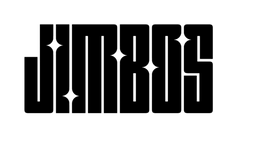Microfiber vs Cotton Towels – Which Should You Use?
When it comes to car detailing, the towel you use is just as important as the soap, wax, or coating you choose. Many beginners start with what they already have at home — cotton bath towels or old t-shirts. But the pros know that microfiber towels are the gold standard for safe, swirl-free detailing. So which should you really use: microfiber or cotton?
In this guide, we’ll break down the differences between microfiber and cotton towels, explain why microfiber dominates the detailing world, and show you how to choose the right towel for every job on your car.
What’s the Difference Between Microfiber and Cotton Towels?
The main difference comes down to fiber structure:
- Cotton Towels – Made from natural fibers, cotton is soft, absorbent, and widely available. However, cotton fibers are relatively large and tend to push dirt and debris across the surface rather than trapping it.
- Microfiber Towels – Made from synthetic fibers (usually a polyester and polyamide blend), microfiber is 20x finer than a human hair. These ultra-fine fibers grab and trap dirt, dust, and water without scratching.
This structure makes microfiber uniquely safe for automotive paint, glass, and delicate trim. Cotton may feel soft to the touch, but when it comes to car surfaces, it’s risky.
Why Microfiber Towels Are Safer for Car Paint
Paint, clear coat, and even glossy interior trim are far more delicate than most people realize. Every time you wipe with the wrong towel, you risk introducing fine scratches or swirl marks. Here’s why microfiber is safer than cotton:
- Fiber Fineness: Microfiber is thinner than silk, meaning it can clean at a microscopic level without dragging grit across the paint.
- Split Fibers: High-quality microfiber towels are “split” during production, creating tiny channels that trap dirt and water deep inside the towel rather than letting it scratch the surface.
- Static Charge: Microfiber naturally attracts dust and lint due to static electricity, making it ideal for dusting dashboards or wiping glass.
- No Linting: Cotton towels often shed fibers, especially when old. These lint pieces can stick to glass or paint, creating more cleanup work.
In short, microfiber doesn’t just move dirt — it removes it safely.
When Cotton Towels Cause Damage
Let’s look at common scenarios where cotton towels cause problems:
- Drying a car: Cotton pushes water around and leaves streaks. Worse, it drags any dust or grit still on the paint across the surface, causing micro-scratches.
- Polish or wax removal: Cotton lacks the bite to grab residues cleanly, leading to streaks and uneven finishes.
- Interior cleaning: Cotton towels leave lint everywhere, especially on textured plastics and glass.
This is why professional detailers never use cotton for detailing work. It’s fine for drying dishes — but not your car.
Advantages of Microfiber Towels in Detailing
Here’s why microfiber towels are a must-have for car care:
- Scratch-Free: Designed to be safe on paint, clear coat, chrome, glass, and plastic.
- High Absorbency: Can hold up to 7x their weight in water — perfect for drying.
- Versatile: Different GSM (grams per square meter) and weaves make microfiber ideal for everything from drying to coating removal.
- Durable: Quality microfiber towels can last hundreds of washes if cared for properly.
Whether you’re drying your car, applying ceramic spray, or cleaning interiors, microfiber gives you precision and safety that cotton can’t match.
Types of Microfiber Towels You Should Use
Not all microfiber towels are the same. Here’s a quick breakdown of which ones belong in your arsenal:
- Everyday Microfiber Towels: A solid all-purpose towel for interiors, quick detailing, and general wipe downs. 👉 Everyday Microfiber Towels
- Massive Drying Towels: Large, plush towels designed to soak up water without streaks. 👉 Massive Drying Towel
- Orange Wash Microfiber Towels: High-pile towels perfect for contact washing and swirl-free cleaning. 👉 Orange Wash Microfiber Towel
- Softer Than Soft Towels: Ultra-premium towels for delicate surfaces like black paint, ceramic coating leveling, or interior gloss trim. 👉 Softer Than Soft Microfiber Towels
Can You Ever Use Cotton Towels on Cars?
There are very few cases where cotton might be acceptable:
- Buffing chrome or metal trim: Cotton can sometimes provide extra bite when polishing bare metal.
- Engine bay work: If you’re wiping grease or oil, an old cotton rag is fine since paint safety isn’t a concern.
- Disposable jobs: Messy, one-time cleanups where you don’t want to ruin a microfiber towel.
But for paint, glass, or interiors — stick with microfiber only.
How to Care for Microfiber Towels
One mistake people make is treating microfiber like cotton in the wash. Proper care ensures they stay effective and safe:
- Wash separately: Never mix microfiber with cotton, or lint will stick to the fibers.
- Use dedicated microfiber detergent: Avoid fabric softeners and bleach, which destroy the fibers.
- Low heat drying: High heat can melt fibers. Tumble dry low or air dry.
- Sort by use: Keep separate stacks for paint, wheels, interiors, and glass to avoid cross-contamination.
For a full breakdown, check out our guide here: 👉 Microfiber vs Cotton for Detailing – Deep Dive
Microfiber vs Cotton Towels – Side-by-Side Comparison
| Feature | Microfiber | Cotton |
|---|---|---|
| Paint Safety | ✔️ Safe, scratch-free | ❌ High risk of swirls |
| Absorbency | ✔️ Holds 7x weight in water | ✔️ Absorbent, but less efficient |
| Lint-Free | ✔️ Minimal lint | ❌ Often leaves lint |
| Durability | ✔️ Hundreds of washes | ❌ Degrades quickly |
| Cost | Higher upfront, longer-lasting | Cheaper upfront, but disposable |
Pro Tips for Choosing the Right Towel
- Use plush, high-GSM towels for drying and quick detailers.
- Use short-pile towels for glass and interior plastics.
- Keep dedicated towels for coatings to avoid cross-contamination.
- Always fold towels into quarters to maximize surface area and reduce pressure.
Final Verdict: Microfiber Wins Every Time
While cotton towels have their place in the garage, they don’t belong on your paint. Microfiber towels are engineered to protect modern clear coats, absorb water efficiently, and last through hundreds of washes. If you care about swirl-free paint and streak-free glass, microfiber is the clear winner.
Related Posts
- Can You Use the Same Microfiber Towel for Everything?
- Best Microfiber Car Drying Towel
- Waffle Weave vs Modern Drying Towels
FAQs – Microfiber vs Cotton Towels
Are microfiber towels really better than cotton for cars?
Yes. Microfiber towels are safer for paint, more absorbent, and longer-lasting than cotton towels. Cotton towels can cause swirl marks and leave lint behind.
Can I use old t-shirts or bath towels to dry my car?
No. While cotton t-shirts or bath towels may seem soft, they push dirt across the paint and increase the risk of scratches. A proper microfiber drying towel is the safe choice.
How do I wash microfiber towels?
Wash microfiber separately with a dedicated microfiber detergent, avoid fabric softeners, and dry on low heat. Proper care extends towel life and keeps them safe for paint.
Upgrade Your Detailing Game with the Right Towels
Don’t risk scratching your paint with old cotton towels. Invest in quality microfiber for swirl-free, professional results every time.



